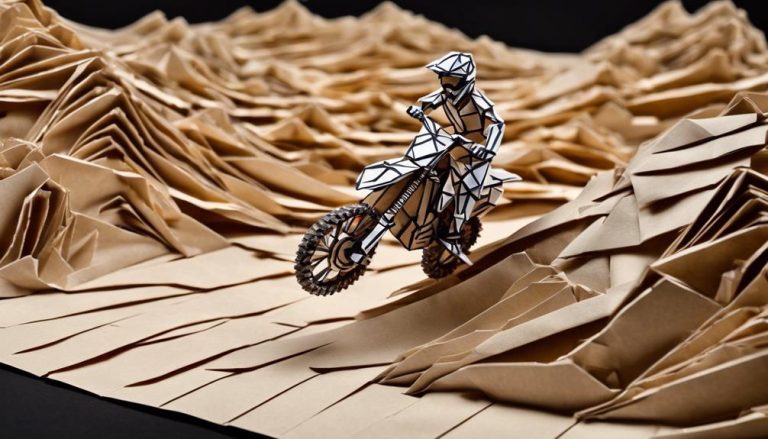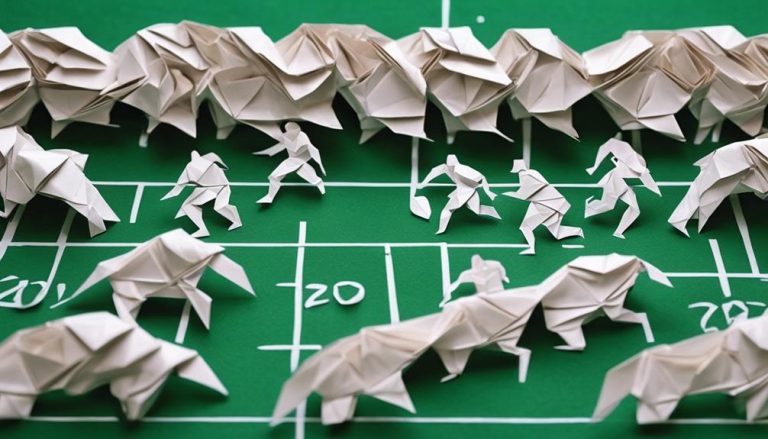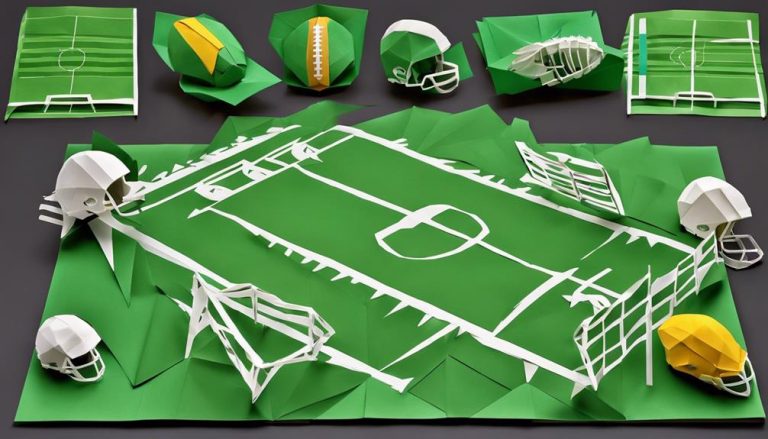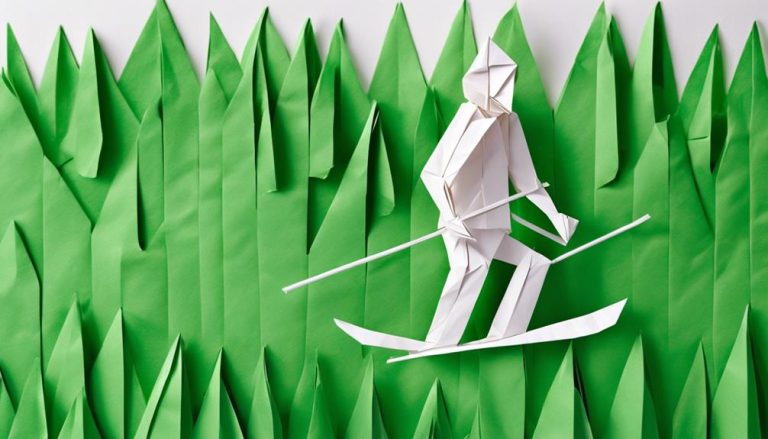General Rules of Freestyle BMX
You're about to enter the world of freestyle BMX, where precision, skill, and style converge. First and foremost, prioritize safety with a helmet, knee pads, and closed-toe shoes. Understand bike specifications, ride with respect for others, and learn basic bike handling skills. Familiarize yourself with contest rules and judging criteria, and master trick classification and difficulty. Know the event formats and competition guidelines. To conclude, understand penalties and disqualification guidelines. As you grasp these general rules, you'll reveal the secrets to mastering freestyle BMX – and there's more to uncover as you progress.
Safety Precautions and Protective Gear
When you're about to hit the ramps or trails on your freestyle BMX, make sure you're geared up with the essential protective equipment to minimize the risk of injury. Helmets Matter, and it's important to choose a helmet that meets safety standards. Look for a helmet that's certified by organizations like the Snell Memorial Foundation or the U.S. Consumer Product Safety Commission. A good helmet should fit snugly, be comfortable, and have a secure chin strap.
In addition to a helmet, Knee Savers are a must-have. Knee pads protect your knees from scrapes, bruises, and fractures. Opt for knee pads with a hard plastic shell and a comfortable, breathable interior. Make sure they fit properly and provide adequate coverage. Elbow pads and gloves are also essential, providing protection for your elbows and hands. Don't forget to wear closed-toe shoes, preferably with a stiff sole, to prevent ankle twists and foot injuries. By wearing the right gear, you'll be able to ride freely, without worrying about getting hurt. Remember, safety should always be your top priority when riding a freestyle BMX.
Bike Specifications and Modifications
As you prepare to shred the streets on your freestyle BMX bike, it's crucial to grasp the frame design essentials that'll keep you upright and in control. You'll want to make certain your frame's geometry, material, and construction can withstand the stresses of extreme riding. By upgrading custom components strategically, you can fine-tune your bike to match your unique riding style and preferences.
Frame Design Essentials
Your freestyle BMX bike's frame is its backbone, and its design essentials – including geometry, material, and construction – directly impact your ride's responsiveness, durability, and overall performance. As a freestyle BMX rider, you need a frame that can withstand the demands of your tricks and stunts.
When it comes to frame materials, you've got options. Here's a breakdown:
| Frame Material | Characteristics | Ideal For |
|---|---|---|
| Chromoly Steel | Strong, durable, affordable | Beginners, casual riders |
| Aluminum | Lightweight, corrosion-resistant | Intermediate riders, tricks, and jumps |
| Carbon Fiber | Ultra-light, high-performance | Advanced riders, competition |
Geometry options also play an important role in your frame's design. A frame with a shorter wheelbase and steeper head angle will be more agile and responsive, while a frame with a longer wheelbase and slacker head angle will be more stable at high speeds. Consider your riding style and preferences when selecting a frame that suits you best.
Custom Component Upgrades
With your frame design essentials in check, you're ready to fine-tune your freestyle BMX bike with custom component upgrades that'll elevate your ride to the next level. It's time to explore personalization options that reflect your unique style and riding preferences. Upgrading your components can greatly enhance your bike's performance, durability, and overall aesthetic appeal.
When it comes to custom component upgrades, the possibilities are endless. You can swap out your stock parts for lightweight, high-performance alternatives that enhance your bike's responsiveness and agility. Aesthetic enhancements like anodized bolts, colorful cable housings, or custom decals can give your bike a one-of-a-kind look that sets you apart from the crowd.
Consider upgrading your handlebars, stem, or seatpost to optimize your bike's ergonomics and comfort. You can also experiment with different gear ratios, chainrings, or sprockets to fine-tune your bike's acceleration and speed. By carefully selecting the right components, you'll maximize your bike's full potential and bring out your inner freestyle BMX master.
Riding Etiquette and Respect
As you ride, you'll need to be aware of your surroundings and respect the rules of the park, as well as the other riders around you. You'll want to ride in control zones, which are designated areas where you can practice your skills without interfering with others. By doing so, you'll guarantee a safe and enjoyable experience for yourself and those around you.
Respect the Park Rules
Upon entering a skate park or BMX facility, it's crucial to familiarize yourself with the posted rules and regulations, which are in place to guarantee a safe and enjoyable experience for all riders. Park regulations are not meant to restrict your freedom, but rather to make sure that everyone can ride without unnecessary risks. It's important to acknowledge that you're accountable for your actions within the park. Rider accountability means being mindful of your skills and abilities, knowing when to take risks, and being aware of your surroundings.
Before you start riding, take a few minutes to review the park's rules and regulations. Understand the specific rules regarding helmet use, bike inspections, and riding areas. Be respectful of other riders, and be prepared to adapt to changing park conditions. Remember, park rules are in place to protect you and others. By respecting these regulations, you're contributing to a positive and safe riding environment. By doing so, you'll be able to ride freely, without unnecessary interruptions, and enjoy the liberating experience that freestyle BMX has to offer.
Ride in Control Zones
Riding in control zones demands you maintain awareness of your surroundings, anticipating potential collisions and respecting others' space to guarantee a harmonious riding environment. As you ride, stay focused on your speed, direction, and positioning to avoid accidents. This mindfulness allows you to adjust your riding strategies accordingly, ensuring a smooth and enjoyable experience for yourself and others around you.
When riding in control zones, keep the following in mind:
- Be aware of your surroundings: Keep an eye out for other riders, pedestrians, and obstacles in your path.
- Communicate with others: Use hand signals or verbal cues to indicate your intentions and avoid confusion.
- Respect others' space: Give fellow riders ample space to perform their tricks and maneuvers.
- Adapt to changing conditions: Adjust your riding strategies according to the number of riders, weather, and park conditions.
Contest Rules and Judging Criteria
You'll need to comprehend the contest rules and judging criteria to guarantee you're assessed fairly and to optimize your performance in freestyle BMX competitions. Understanding the rules and judging criteria will give you an edge over your competitors and help you develop a winning strategy.
In freestyle BMX competitions, judges assess riders based on their technical skills, style, and overall performance. Judges use their discretion to evaluate each rider's performance, taking into account factors such as difficulty, execution, and creativity. Scorekeeping methods vary depending on the competition, but most use a point-based system to determine the winner. Riders are awarded points for each trick they perform, with more complex tricks earning higher scores. Judges also consider factors such as speed, flow, and overall style when awarding points. By understanding the contest rules and judging criteria, you can tailor your performance to impress the judges and take home the top prize. With a solid grasp of the rules and criteria, you'll be able to ride with confidence and precision, giving you the edge you need to succeed in freestyle BMX competitions.
Basic Bike Handling Skills
Mastering six fundamental bike handling skills – balancing, starting, stopping, turning, shifting, and braking – is essential for establishing a strong foundation in freestyle BMX. As you begin your freestyle journey, focus on developing these skills to reveal your full potential.
To improve your bike handling, practice the following techniques:
- Balancing techniques: Focus on your body position, keeping your weight centered over the bike, and making subtle adjustments to maintain balance.
- Cornering strategies: Learn to lean into turns, using your body weight to initiate the turn, and applying gentle pressure to the pedals to maintain traction.
- Proper braking: Develop a smooth, controlled braking technique to maintain speed and control, especially when approaching jumps or technical sections.
- Shifting and pedaling: Master the art of smooth gear shifts and efficient pedaling to maintain momentum and flow.
Trick Classification and Difficulty
As you progress in freestyle BMX, understanding trick classification and difficulty ratings helps you measure your skills, set realistic goals, and create a structured practice plan. Trick classification is vital in freestyle BMX, as it enables you to identify your strengths and weaknesses, and focus on specific areas for improvement. Tricks are typically classified into three categories: foundation, intermediate, and advanced. Foundation tricks are the building blocks of freestyle BMX, while intermediate tricks introduce more complexity and difficulty. Advanced tricks require high-level skills, precision, and style.
When progressing through trick classifications, it's important to take into account trick progression, where you gradually build upon previously learned skills. This approach helps you develop muscle memory, confidence, and a solid foundation for more complex tricks. Additionally, style variations play a significant role in trick classification, as they add uniqueness and personality to your riding. By understanding trick classification and difficulty ratings, you'll be able to create a customized practice plan, tailored to your skills and goals, ultimately leading to rapid progress and liberation on your bike.
Event Formats and Competition
With a solid understanding of trick classification and difficulty ratings, you're now ready to apply your skills in various event formats and competitions that test your expertise and creativity. In freestyle BMX, competitions can take many forms, each with its unique challenges and requirements.
Here are some common event formats you'll encounter:
- Park Competition: Riders are judged on their skills in a specially designed course with various features such as ramps, ledges, and bowls. Course design plays an important role in testing riders' abilities, and riders must adapt their skills to the specific course.
- Street Competition: Riders compete on a street-style course, mimicking real-world riding environments. This format emphasizes creativity and style.
- Dirt Competition: Riders compete on a dirt course with jumps and natural obstacles, requiring speed, air awareness, and precision.
- Flatland Competition: Riders showcase their skills on flat ground, focusing on balance, coordination, and intricate maneuvers.
Understanding these event formats and how they align with your rider profile is key to success in competitions. As you prepare for events, consider how your skills match up with the specific demands of each format.
Penalties and Disqualification Guidelines
In competitions, you'll face penalties for mistakes that can impact your overall score, and understanding these guidelines is important to avoiding costly deductions. Penalties can range from minor infractions, such as failing to wear required safety gear, to more severe offenses like intentionally interfering with other riders. Judges will deduct points for each infraction, and repeated mistakes can lead to disqualification.
It's essential to maintain Fair Play and avoid Judging Biases by adhering to the rules and respecting your fellow competitors. Remember, the goal is to showcase your skills, not to disrupt the competition or compromise safety. If you're unsure about a specific rule or penalty, don't hesitate to ask the judges or event organizers for clarification.
In the event of a dispute, riders can appeal to the head judge or competition director for a review of the penalty. However, be aware that intentional or repeated violations can result in disqualification, and riders may be subject to disciplinary action. By familiarizing yourself with these guidelines, you'll be better equipped to navigate the competition and focus on what matters most – riding your best and having fun.
Frequently Asked Questions
Can I Use a Mountain Bike for Freestyle BMX Competitions?
"Can you use a mountain bike for freestyle BMX competitions? Technically, yes, but you'll need to modify it with BMX-specific parts and adapt your riding style to suit the discipline, which is a significant transformation."
Are There Any Age Restrictions for Freestyle BMX Competitions?
You'll find age restrictions vary, but most competitions have Youth categories, dividing riders into Age divisions, such as 12-14, 15-16, and 17-18, ensuring a fair and fun experience for all participants, regardless of age.
Can I Participate in Freestyle BMX Events if I'm Not a Pro Rider?
"Imagine Emily, a local rider with intermediate skills, who crushes it at her hometown park. You, too, can participate in freestyle BMX events, regardless of pro status, as long as you meet the required skill levels and event-specific rules."
Are Freestyle BMX Competitions Open to Riders With Disabilities?
You'll be stoked to know that freestyle BMX competitions are becoming increasingly inclusive, with accessible ramps and inclusive judging, allowing riders with disabilities to participate and showcase their skills on a level playing field.
Can I Participate in Multiple Freestyle BMX Events in One Day?
"As you strategize your competition approach, you wonder: can you tackle multiple events in one day? The answer lies in event scheduling – carefully plan your day, and you'll be able to ride in multiple events, no problem!"






